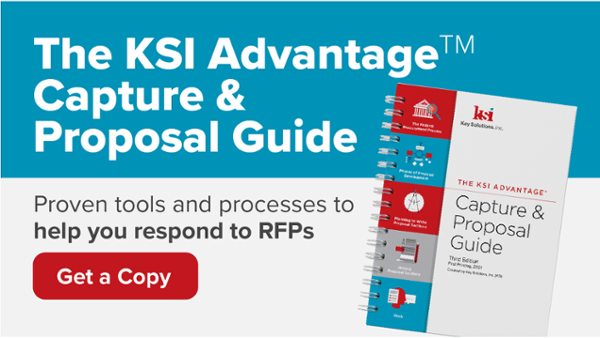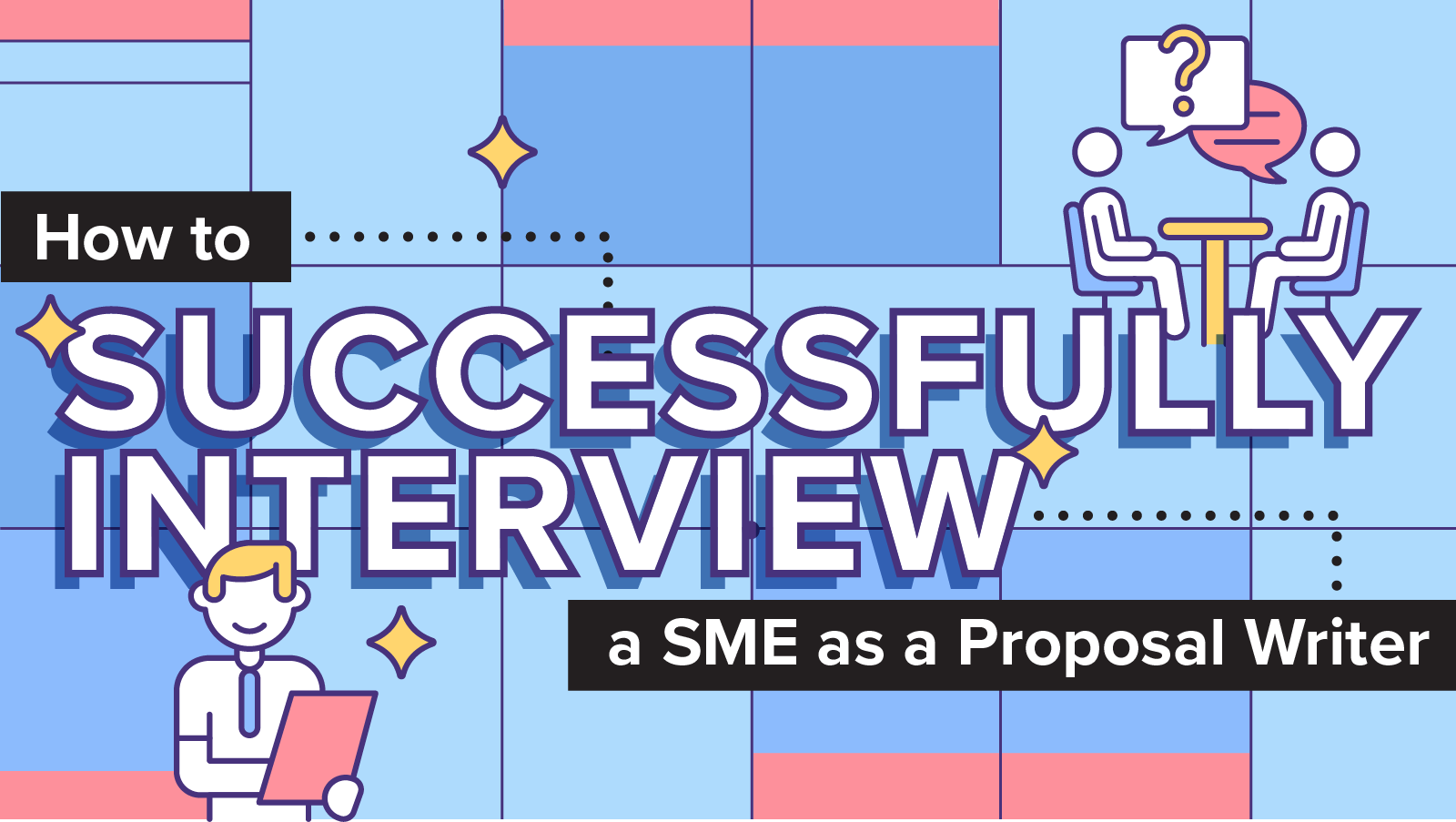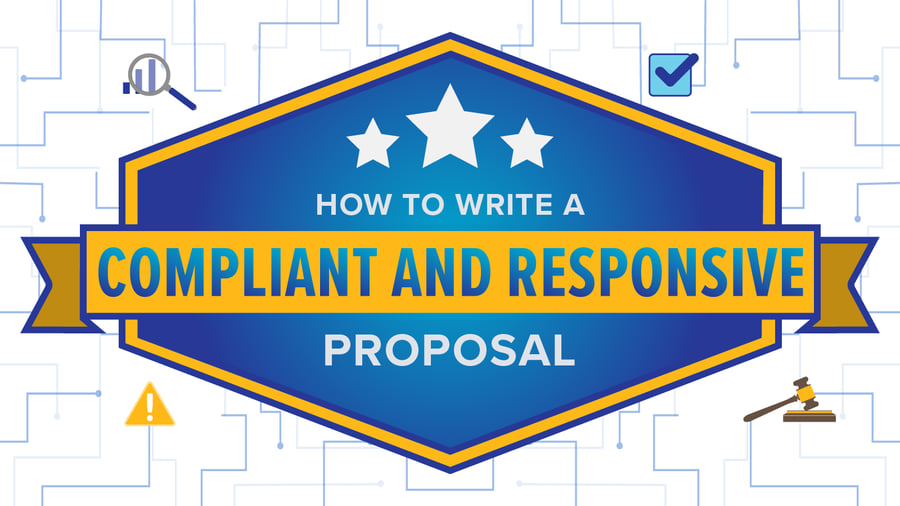
In the competitive world of bids and proposals, it is critical for proposals to not only be compliant but also responsive.
This requires a multifaceted approach:
- Review the solicitation and strictly adhere to the proposal instructions.
- Create a Compliance Integration Matrix.
- Address the customer’s vision, immediate needs, and hot buttons using quantifiable strengths, as well as Features and Benefits.
In this article, first, we’ll cover how to make sure your proposal is compliant, including key tools you can apply to support a compliant response. Then we’ll discuss responsiveness and highlight tools that will facilitate a customer-focused response to increase your overall chances of winning.
Compliance
Compliance is strict adherence to the bid request, including formatting and requirements. Compliance is critical because evaluators may choose not to evaluate non-compliant proposals at all. Throwing out non-compliant proposals is an easy way to lighten their workload.

During pre-proposal and proposal development, Proposal Managers can safeguard compliance by developing compliance tools to help ensure the structure aligns to the solicitation requirements. These tools include:
- Compliance and Integration Matrix
- Proposal Outline and Writer Assignments
- Wall of Truth and Writer Style Guide
1. Compliance and Integration Matrix – The Proposal Manager begins by creating an integrated proposal outline and compliance matrix.
The Compliance Matrix is composed of Sections L, M, and C – Instructions, Evaluation, and Performance Work Statement (PWS)/Statement of Work (SOW), and any other requirements such as Section H. Exhibit 1 is a sample Compliance Matrix showing these sections. There are times that Section L and Section M don’t align requiring the Proposal Manager to add an extra subheading to ensure compliance.
The compliance matrix is what reviewers will use for evaluation purposes during color or draft reviews. It can be extended to capture compliance (Yes/No or Compliant/Not Compliant) if there is a Compliance Manager on the team.
Exhibit 1: Sample Compliance and Integration Matrices support the enforcement of proposal compliance.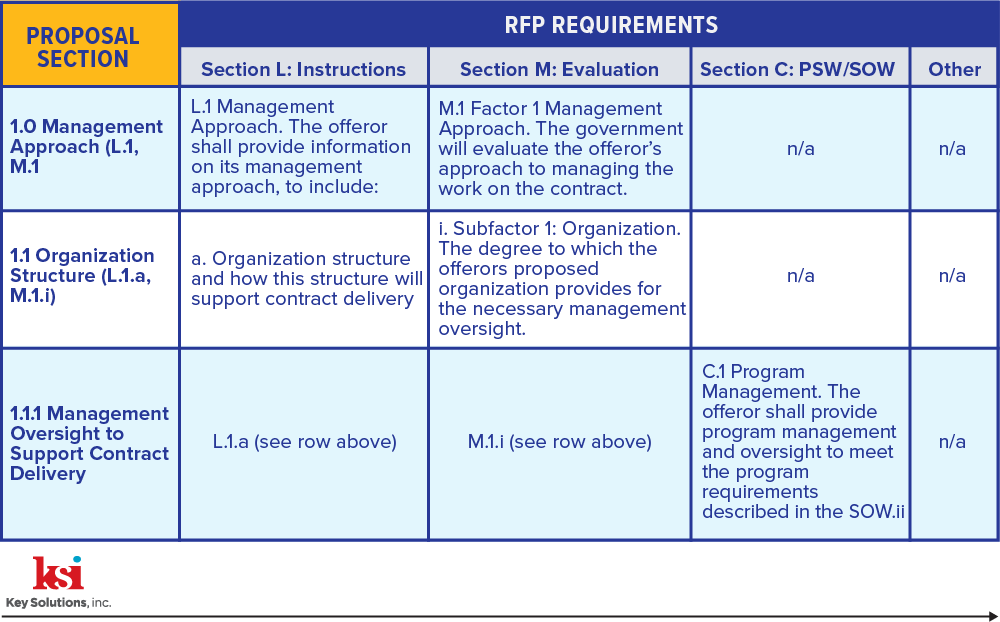
2. Proposal Outline and Writer Assignments – The Proposal Manager can add columns to Figure 1 to allocate page limits and writer assignments or create a high-level outline in conjunction with column one.
The goal is to make sure page limits are compliant and a dedicated resource is provided for each section. This can be a high-level outline to assist with Proposal Management meetings or an extension of the Compliance Matrix.
Exhibit 2: The Proposal Manager may choose to use a separate page allocation and assignment list. A high-level Proposal Outline with page allocation and writer assignments assures adequate proposal resources and compliance with solicitation page limitations
3. Wall of Truth/Style Guide – The Wall of Truth and Style Guide help maintain consistency between the sections.
The Proposal Coordinator and/or Proposal Manager creates and updates a list of approved conventions for use in the proposal, ensuring the Proposal Writers use the same terminology throughout the proposal. Examples of standard conventions include:
- Company names
- Team name
- Client name
- Program name
- Standard acronyms
- Name of processes being used
- Various metrics (Years of experience, retention, etc.)
Compliance doesn’t win proposals, but compliance keeps you in the game. A proposal that is structured or formatted wrong, or that is missing a major requirement, can easily get disqualified.
Responsiveness
Responsiveness is articulating an understanding of the customer's vision, immediate needs, relationships, and hot button issues. This understanding begins during the Capture Phase.
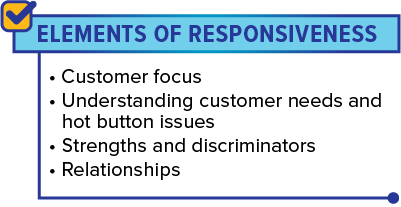
Being able to incorporate win themes in each section helps highlight the features of your solution and create a customer-focused response that will resonate with the evaluators. An important tool that supports responsiveness is the Storyboard/Section Strategy Template.
Storyboards/Section Strategy Template – In the Storyboards/Section Strategy Templates, Proposal Writers are prompted to address key issues. To ensure responsiveness, Proposal Writers must work with the capture team and those who understand the customer and program to determine their solution or approach, including the following aspects:
- Vision – the Agency’s specific mission and vision for the specific program and how the offeror solution adds value. Linking the mission and vision to the current procurement provides an understanding and familiarity; it gives the Offeror an inroad to customer focus.
- Customer’s immediate needs – The Annotated Section Outline and Compliance Checklist defines what the customer needs are if no relationship exists between the offeror and Agency. Offerors can flesh out customer needs from your competitor’s weaknesses, or occasionally there are times where the Office of the Inspector General has done an audit and that can provide the Agency’s immediate needs and Hot Button issues.
- Hot Buttons issues – An amalgamation of issues, needs, requirements, and evaluation criteria. Citing the customer’s hot button immediately places the focus on what the customer needs.
- Features and Benefits – The benefits of the solution tell the customer how it will be of value and why it is desirable. Creating a features/benefits table for each section helps the writer define the section content (features) and the reasons why the evaluators should select the team (customer benefits). Features are concrete offerings, e.g., the organization, processes, technology, facilities, capabilities, personnel, etc. Customer benefits of the features should fall into to three basic categories: performance (e.g., increased reliability, decreased risk, reduced error rate), schedule (on time or faster delivery), and lower cost.
- Win Themes – The purpose of the theme statement is to tell the evaluators why they should choose the team. The section theme statement appears at the beginning of the section, often in unique text, and concisely conveys the key features and benefits to the customer.
- Discriminators and Differentiators – Key discriminators and/or differentiators in each section are those features of the solution or proposal offering that differ from the competition.
- Strengths and Weaknesses – Identifying the team’s strengths and weaknesses will define those areas each writer needs to highlight in their write-up and those for which they need to compensate. Defining the competitors’ strengths and weaknesses will identify what writers need to counter and what they should ghost.
Integrating Compliance and Responsive Elements
Once you develop a compliant structure and format, detailed section outlines, the Proposal Writer can begin to layer in the elements of responsiveness and customer focus: win themes, features and benefits, and strengths of weaknesses.
These are the responsive elements of your competitive proposal. A key tool that supports the integration of compliance and responsiveness is the Annotated Section Outline. 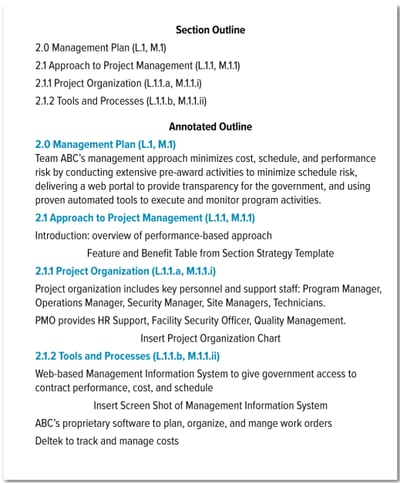
Annotated Section Outlines – Annotated outlines help Proposal Writers plan section content. Proposal Managers use Sections L, M, and C to display the solicitation requirements to respond to in each section, in addition to callout boxes, theme statements, and graphics placeholders.
The annotated outline pulls key responsive elements from the Storyboards/Section Strategy Templates into the compliant proposal outline:
- Cite the customer’s mission/vision
- Link approach to customer vision for procurement
- Headings
- Feature and benefits tables
- Strengths
Conclusion

Proposals can be compliant and not responsive, and proposals can be responsive but not compliant. However, a non-compliant proposal may never even be evaluated by the evaluator.
To ensure your proposals are both compliant and responsive, adhere to the solicitation format and instructions strictly, create a Compliance Matrix, utilize Storyboards/Section Strategy Templates, and Annotated Section outlines layering in win themes, hot buttons, and discriminators responding to the customers’ needs and vision for the procurement.
This will facilitate the development of a compliant, complete, and customer-focused response to increase your overall chances of winning.



